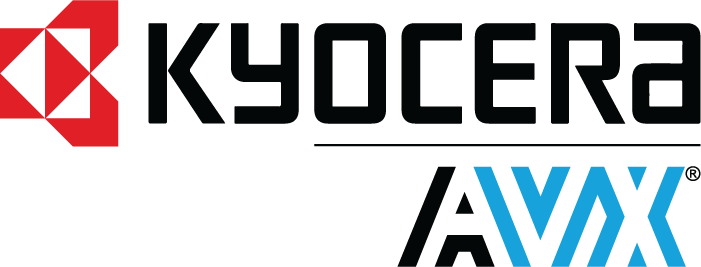
KYOCERA AVX
KYOCERA AVX is a leading manufacturer of electronic components, specializing in ceramic capacitors, connectors, and filters. With a history dating back to 1972, KYOCERA AVX has become a trusted name in the electronics industry, known for their high-performance products and exceptional customer service. The company's product portfolio includes a wide range of passive electronic components designed to meet the specific needs of various industries, including automotive, aerospace, and telecommunications. KYOCERA AVX's state-of-the-art facilities, advanced technologies, and skilled workforce enable them to deliver customized solutions with exceptional accuracy and reliability. The company is committed to sustainability, using eco-friendly materials and production methods to minimize their impact on the environment. Through continuous innovation and a customer-centric approach, KYOCERA AVX continues to drive progress in the field of electronic components, providing cutting-edge products designed to meet the evolving needs of modern industries.
Proximity Sensors - Industrial
Results:
2
Series
Operating Temperature
Ingress Protection
Sensing Distance
Termination Style
Output Type
Shielding
Response Frequency
Indicator
Package / Case
Sensor Type
Voltage - Supply
Material - Body
Results remaining:2
Applied Filters:
KYOCERA AVX
About Proximity Sensors - Industrial
Industrial proximity sensors are essential devices that are designed to detect and respond to movement in close proximity to the sensor within a specified range. These sensors can detect movement ranging from 0 inches (0 mm) to 50 feet (15.2 meters), making them suitable for a wide range of industrial applications.
There are different types of industrial proximity sensors available, each utilizing different detection principles. Capacitive proximity sensors operate by detecting changes in capacitance caused by the presence of an object. Inductive proximity sensors, on the other hand, use electromagnetic fields to detect the presence of metallic objects. Infrared proximity sensors rely on infrared light to detect objects within their range, while light sensors utilize visible light to perform the same function. Ultrasonic proximity sensors emit high-frequency sound waves and detect objects based on the reflection of these waves.
The output types of industrial proximity sensors vary depending on the specific application requirements. They can include analog current or voltage outputs for continuous measurement, configurable outputs that can be adjusted to specific settings, I2C outputs for digital communication, as well as normally closed (NC), normally open (NO), NPN, PNP, push-pull, relay, and SCR outputs. Some proximity sensors may require an amplifier for signal conditioning and amplification.
These sensors are specifically designed for use in industrial environments, where they are exposed to harsh conditions such as vibrations, temperature variations, and moisture. They are constructed with rugged materials and built to withstand these challenging conditions, ensuring reliable and consistent operation in industrial settings.
In summary, industrial proximity sensors are crucial devices used to detect and respond to movement within a specified range. They employ various detection principles and offer different output types to cater to specific application requirements. These sensors are designed for use in industrial settings, where they endure demanding conditions and contribute to the efficient and safe operation of industrial processes.


